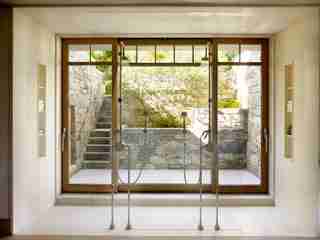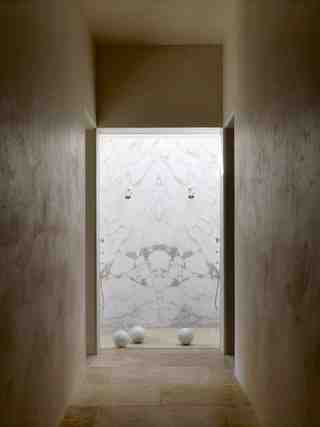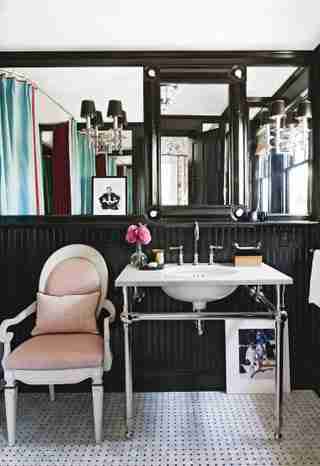“When my husband, Robert, and I began Waterworks, we wanted to reclaim bathroom design from the plumber and return it to the homeowner,” writes Barbara Sallick. While this philosophy was established at the beginning of the fitting and fixture company’s history, it stuck, and it continues to inspire the cofounders today. Forty years of experience later, Sallick is sharing her secrets to elevating this overlooked space in the new book The Perfect Bath (Rizzoli, $55). “Ultimately, the choices an individual makes are personal, and based on things as diverse as lifestyle, location, architectural and decorative preferences, and, not least, budget,” she writes. “But there is an ideal way to achieve one’s own perfect bath, a path that Robert and I discovered via trial and error but eventually codified and have seen used successfully, again and again, over decades.” Read on for four ideas from the book to make your everyday bath into a luxurious spa.

Location, location, location
Keep your bath’s aesthetic in line with the rest of your home, specifically the rooms nearest it—and that includes outdoor space. “A consideration that embraces both context and adjacencies is the view from your bathroom window. If you are at the beach, for example, and the room has an expansive vista of sand, sea, and sky, chances are that you will not only want to frame or take advantage of it in some way, but to use your bath’s material palette to connect interior and exterior.”

Layer materials
“The character of the bath is derived from the materials you choose, how you treat their surfaces, and—most critically—how everything is combined,” writes Sallick. She recommends considering each option—stone, handcrafted tile, wood—for its functionality, then thinking about how different pairings will complement each other. In baths, less is more. “Something I always advise: Do not put every single idea into one room. The more you edit your materials, the clearer the message and the more restful and consoling the experience.”

Light it up
Sure, tile and fixtures are important, but it’s the lighting that will make or break your overall experience in the space. “When it comes to lighting the bath, the basic rule of thumb is the more the better,” writes Sallick. “Many designers recommend a troika of mirror lighting for applying makeup, downlighting for overall illumination, and a pendant for decorative purposes.”
Go bold
While you might be inclined to stick with serene neutrals for a bath, vibrant color isn’t taboo. “Powder rooms, because of their diminutive size, limited use time, and independence form the larger decorative scheme or the house, are excellent venues for the saturation of a rich, arresting hue,” writes Sallick.
